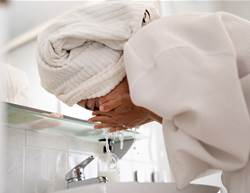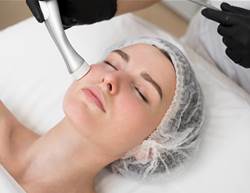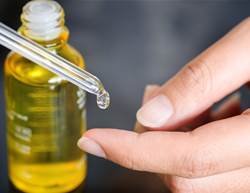Thanks to pimple patches in fun shapes and colours, you can wear a face full of stickers instead of dealing with angry breakouts. They’re cute and offer some camouflage, but do they actually work? Dermatologists weigh in on whether these trendy skincare staples live up to the hype.
If you experience breakouts, struggle with skin picking or are simply looking for new ways to treat and minimise blemishes, here’s what you need to know—because not all pimple patches are created equal.
How do pimple patches work?
Pimple patches act like protective bandages for breakouts. Acne, especially if it’s been picked or popped, is essentially an open sore. A pimple patch creates a barrier between the affected area and the environment (or worse, wandering fingers), helping to speed up healing.
Most pimple patches are made of hydrocolloid, a moisture-retaining material that turns into a gel when it absorbs liquid. “Hydrocolloid prevents scab formation, which helps speed up healing,” explains board-certified dermatologist Dr Ruth McTighe.
Before becoming a skincare trend, hydrocolloid was widely used in wound dressing. In the case of acne patches, it works by absorbing excess oil and pus from the breakout, helping to draw out impurities while protecting the skin.
Some pimple patches are simple hydrocolloid patches, while others are medicated with active ingredients that soothe breakouts while absorbing excess fluids. These ingredients can include salicylic acid, niacinamide or tea tree oil, which help to reduce redness, swelling and inflammation, says board-certified dermatologist Dr Rishi Chopra.
By delivering healing ingredients and preventing skin picking, pimple patches can also be an effective defence against scarring. Some versions even contain microdarts infused with active ingredients, which penetrate deeper into cystic pimples to help target breakouts beneath the skin.
Are pimple patches effective?
A 2024 randomised, controlled clinical trial found that non-medicated hydrocolloid patches significantly reduced pimple size, texture, and redness over 14 days. The research concluded that these patches can be an effective acne treatment for fast, overnight results.
However, their effectiveness depends on several factors—including whether the patch is medicated or not, the type of breakout (whitehead or cystic acne) and whether it’s applied to clean skin.
“They are most effective for superficial pimples and may not work as well on deeper or cystic acne lesions,” says Dr McTighe. “Hydrocolloid pimple patches work best on whiteheads or acne bumps that have already come to a head.”
Dr Chopra adds that pimple patches don’t prevent future breakouts and “are not a substitute for prescription-strength treatments prescribed by a board-certified dermatologist.”
Do pimple patches work on cysts?
Basic hydrocolloid patches without microdarts are not effective for deep, cystic acne and won’t prevent new bumps from forming, says Dr McTighe. Even microdart patches may not be strong enough to fully flatten inflamed cysts.
That said, microdart patches have been shown to help fade post-inflammatory hyperpigmentation, making them useful for treating dark spots left behind by acne.
“If you are experiencing persistent acne, it’s best to consult a dermatologist,” Dr McTighe advises.
When to use a pimple patch
“It is best to apply a pimple patch after cleansing and thoroughly drying your skin,” explains Dr Ruth McTighe. “You can wear them during the day or overnight—just be sure to change them daily or once they turn white.”
When not to use a pimple patch
If you’re unsure whether a pimple patch suits your breakout, it may be best to skip it altogether. While hydrocolloid patches work well on whiteheads, other types of pimples may not respond the same way.
Pimple patches should also not be used on overly inflamed or broken skin, says Dr Rishi Chopra, as this can worsen irritation or trap bacteria, increasing the risk of infection.
How long to keep a pimple patch on
You can leave a patch on overnight or until the surface becomes full of extracted oil and pus, Dr McTighe says.
The best pimple patches
The best pimple patch depends on your skin’s needs. Here are three dermatologist-recommended options:
- Basic hydrocolloid patch – Best for whiteheads
- Microdart medicated patch – Ideal for early-stage cystic acne
- Medicated hydrocolloid patch – Great for whiteheads needing extra treatment
Pimple patch side effects
If you have sensitive or reactive skin, proceed with caution. “Some adhesives or active ingredients can trigger irritation,” Dr Chopra explains, which can lead to contact dermatitis.
Additionally, applying a patch over a popped but unclean pimple can trap bacteria, potentially making the breakout worse.










